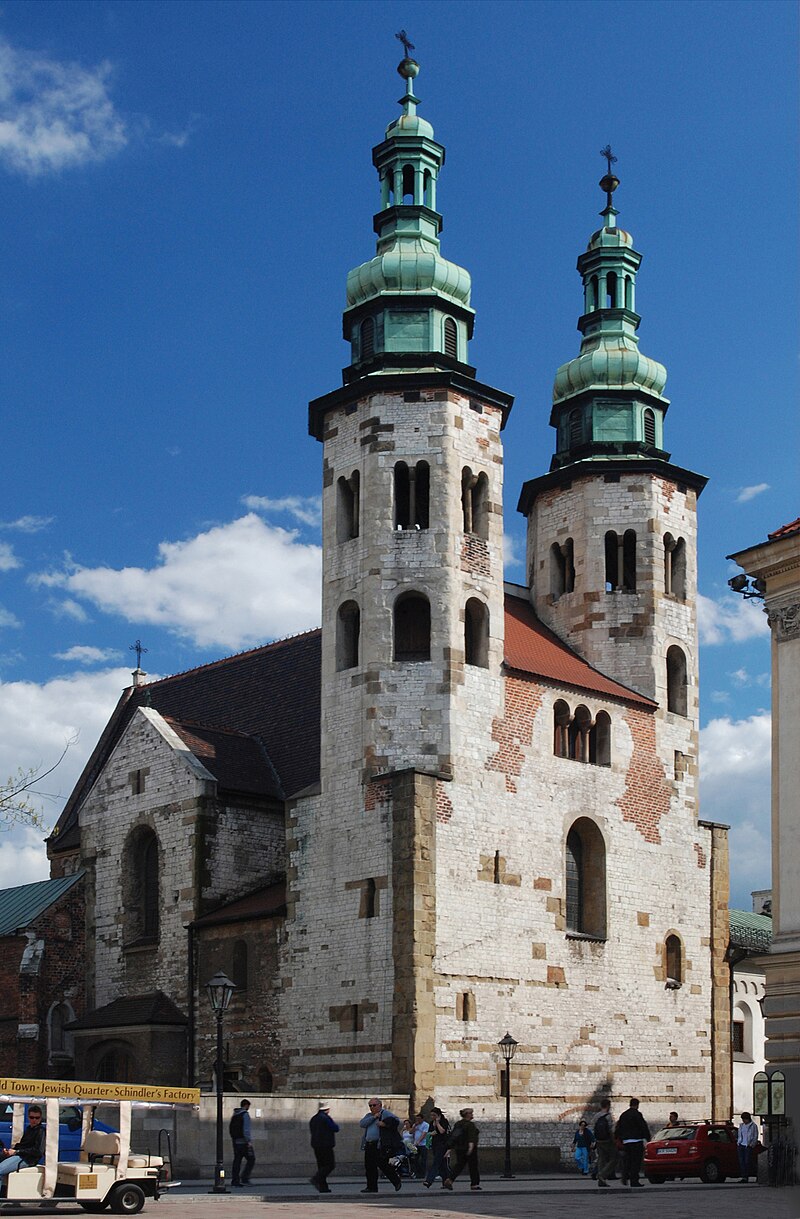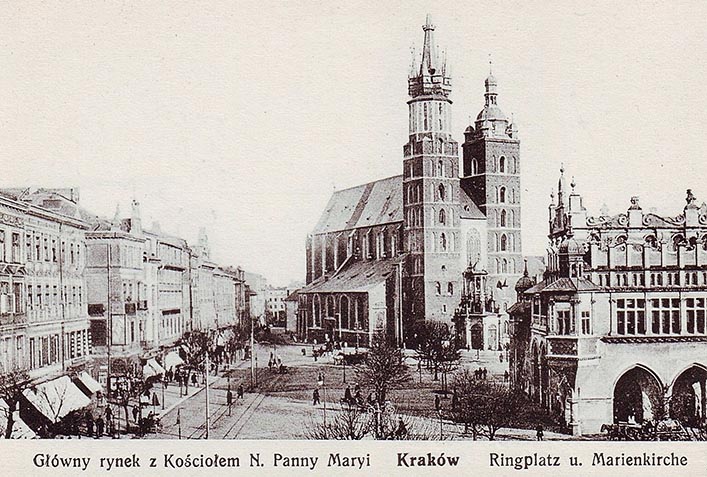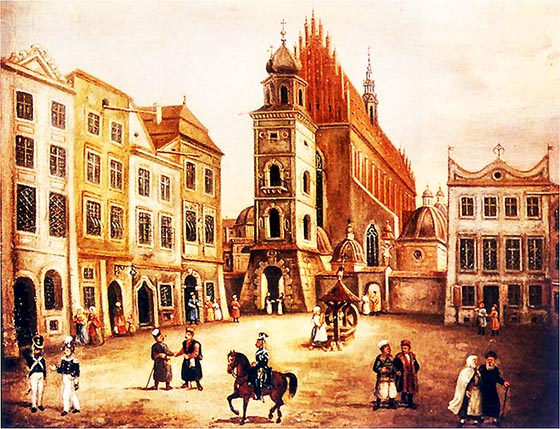
Całkowitym zaskoczeniem jest kontrast między zewnętrznymi murami i wnętrzem świątyni – istnym barokowym cackiem. Najważniejszym elementem wystroju nie jest – jak zazwyczaj bywa – ołtarz główny (marmurowy z pierwszej połowy XVIII w., projektu prawdopodobnie Franciszka Placidiego), ale wielka rokokowa ambona wyobrażająca łódź Piotrową, nad którą barokowy artysta, Baltazar Fontana, rozmieścił w stiukach sceny z życia bł. Salomei, patronki klarysek. Niedawno w północnej wieży na wysokości I piętra odkryto jedną z najstarszych inskrypcji polskich pochodzącą z XII w.
W 1316 r. przy kościele św. Andrzeja osiedlił się żeński zakon klarysek o bardzo surowej regule, ściśle odizolowany od świata zewnętrznego, co pozwoliło uchronić do dnia dzisiejszego wiele unikalnych zabytków: przenośną mozaikę z Matką Boską z przełomu XII i XIII w., XIII-wieczne relikwiarze oraz jedne z najstarszych w Europie figurki jasełkowe z początku XIV w. ofiarowane kościołowi przez siostrę Kazimierza Wielkiego – Elżbietę.
Chcąc obejrzeć dwie spośród figurek jasełkowych (tylko tyle udostępnia się szerokiej publiczności), należy poprosić osobiście siostrę archiwistkę, która zza kraty w rozmównicy dokona powściągliwej prezentacji Madonny i św. Józefa.
Przyjaciółka św. Franciszka, Klara Scifi, utworzyła żeńską wersję jego ruchu w 1212 r. Niezwykle pobożny Bolesław Wstydliwy w 1245 r. sprowadził klaryski do Polski i osadził w Zawichoście. potem zaś bł. Kinga przeniosła je do Starego Sącza. Obecnie ich siedziba jest kościół św, Andrzeja. Klaryski słyną z niezwykle surowej reguły i ścisłej klauzury.
Po tej samej stronie ulicy co kościół św. Andrzeja, pomiędzy zabudowaniami tkwi skromnie fasada ewangelicko-augsburskiego kościoła św. Marcina. Jest on wczesnobarokowym potomkiem romańskiego, XII-wiecznego kościoła katolickiego, przy którym funkcjonował przytułek dla starych i chorych księży. W 1816 r. niedużą, ale elegancką świątynię przejęła gmina ewangelicka. Aby zwiedzić wnętrze świątyni, trzeba mieć szczęście, by trafić, gdy brama jest otwarta – najlepiej w trakcie nabożeństw. We wnętrzu warto obejrzeć XIX-wieczny obraz Henryka Siemiradzkiego „Uciszenie burzy na morzu”, który znajduje się w ołtarzu głównym.
Miniaturowych rozmiarów gotycki kościółek św. Idziego z pierwszej połowy XIV w. malowniczo zamyka zachodnią stronę ul. Grodzkiej. Stoi on na miejscu niewielkiej świątyni romańskiej, która powstała za sprawą Władysława Hermana i jego żony Judyty. Królewska para, wymodliwszy u św. Idziego syna, Bolesława Krzywoustego, zrewanżowała się łaskawemu świętemu maleńkim kościółkiem. Najcenniejsze spośród XVI i XVII-wiecznego wyposażenia są XVI-wieczne stalle pochodzące z kościoła Dominikanów z pierwotnego nagrobka św. Jacka.








